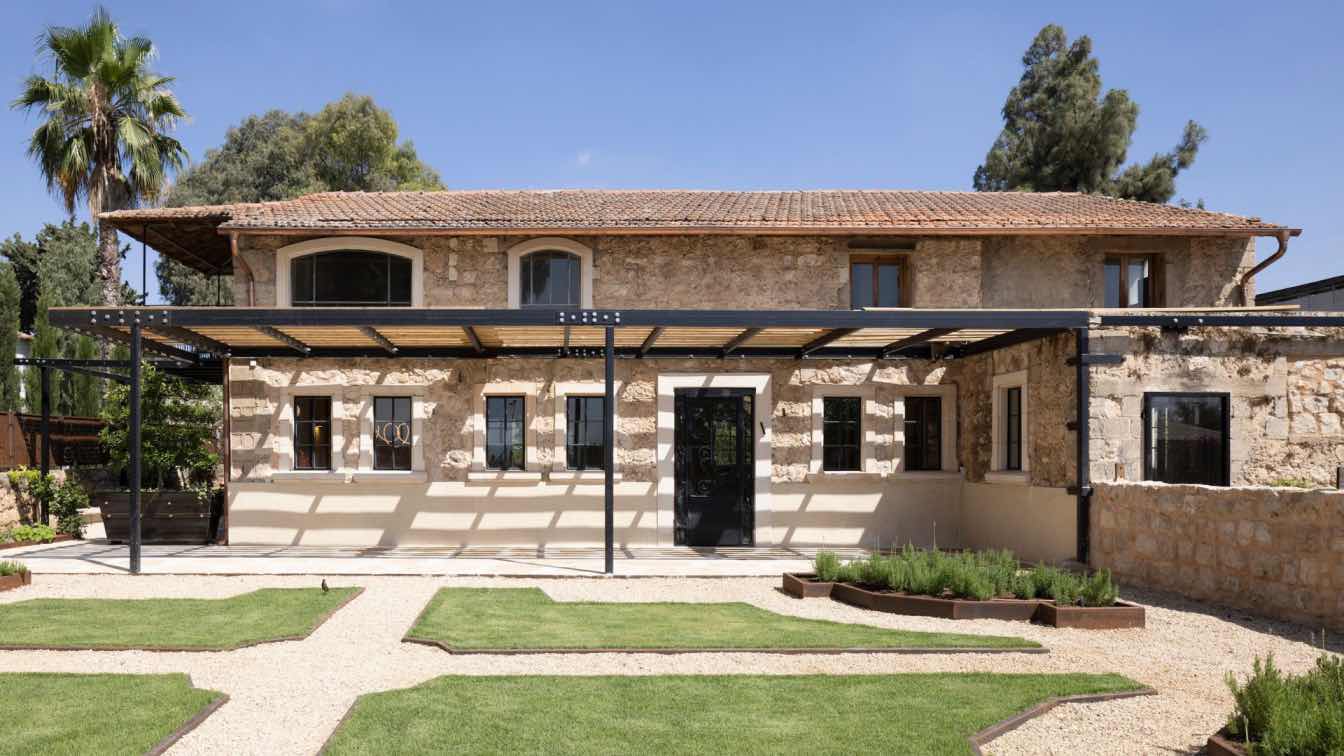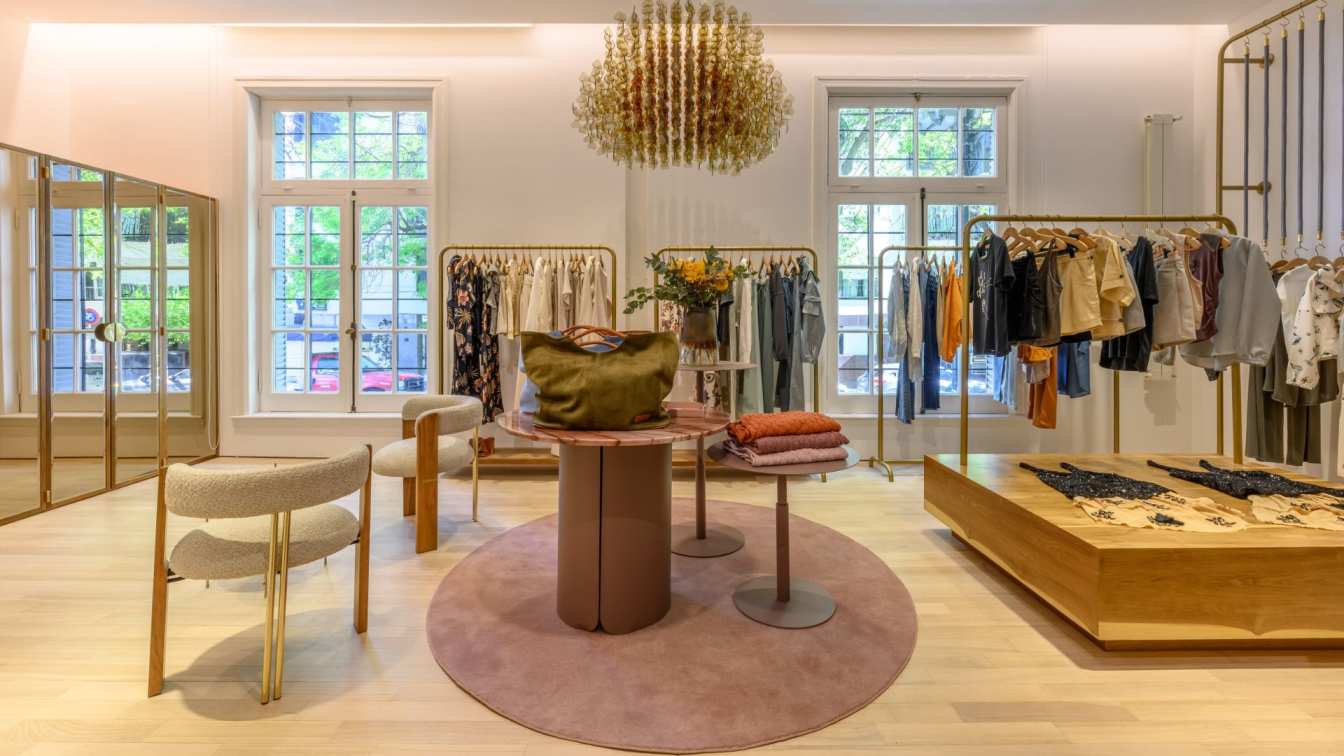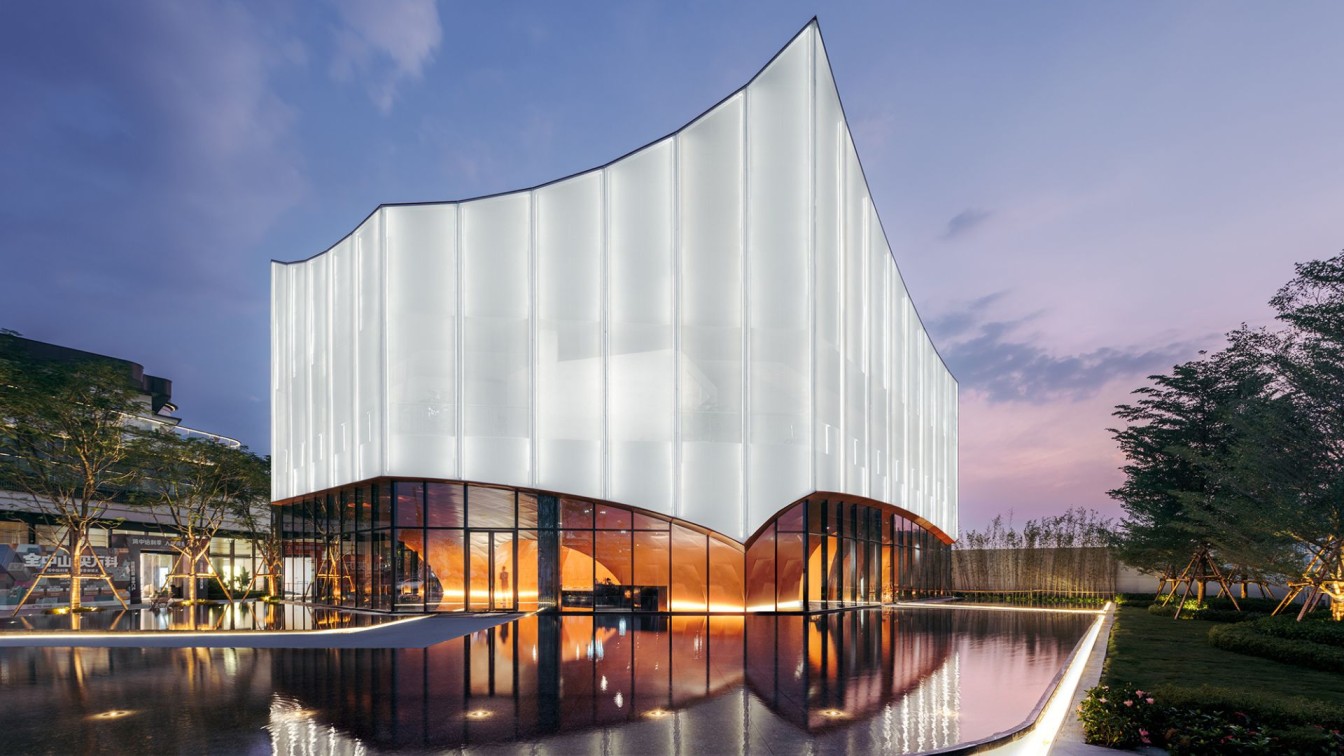Tzvia Kazayoff: The “Hikari Laboratories” project is located in a conservation building in Benei Atarot, a settlement in Israel, which contains 120 years of history in a rare and mesmerizing Templar construction. This once family barn transformed into a multi-use function concept hall. In the initial planning phase, the visionary owners of Hikari, an innovative cosmetics company, presented the importance of finding solutions for the variety of uses of the space that will accommodate the company in the future. Such as guidance for beauticians, a meeting room for staff, various seating areas and entertainment, a CEO room with access to space control, a guest restroom, and a kitchenette.
Our design concept aligned with the core values of the “Hikari Laboratories” company – the combination of natural materials and innovation through cutting-edge technologies. These values were the guiding principles for building the design concept. As well as the emphasis on timeless aesthetics as a common cornerstone in various layers, such as the combination and preservation of the historical aspects of the exposed stone Templar structure. We put thought into the integration between the old and the new, like designing the openings in accordance with the original building casing, in order to preserve the history rooted in the structure.
This concept comes to life through the careful selection and use of natural materials with a modern aesthetic such as stone, iron, and a luxurious marble floor, while always thinking about a design that does not depend on fleeting trends. Also, countless diverse technologies have been incorporated into functional and aesthetic solutions that adapt themselves to the existing structure and the challenges it entails.




































